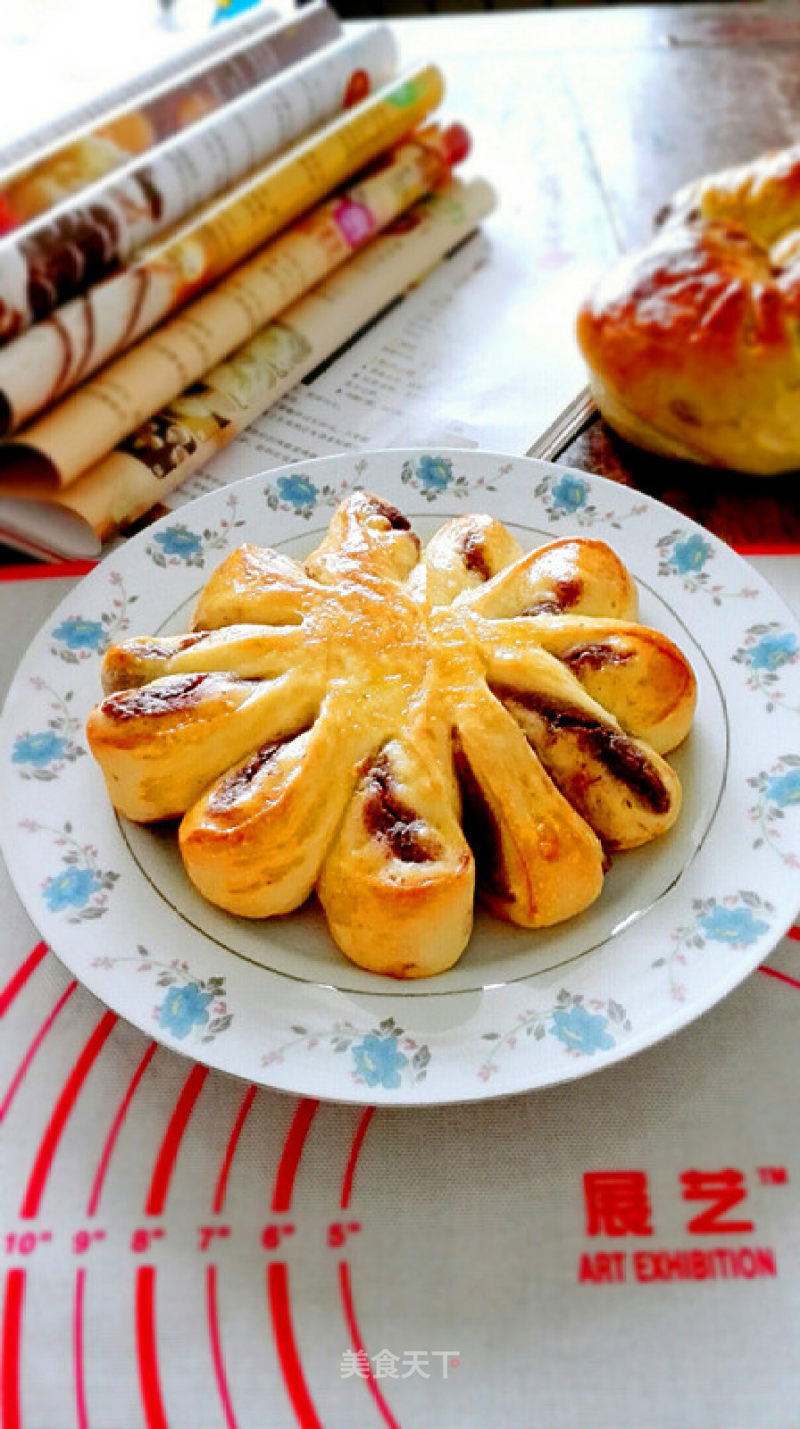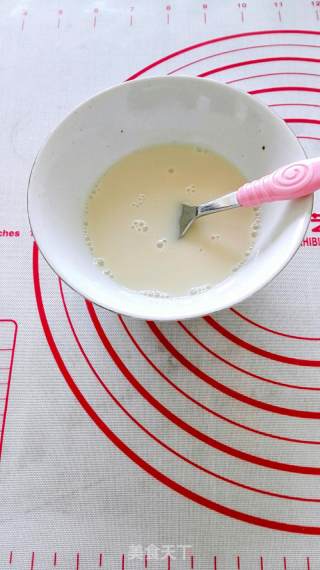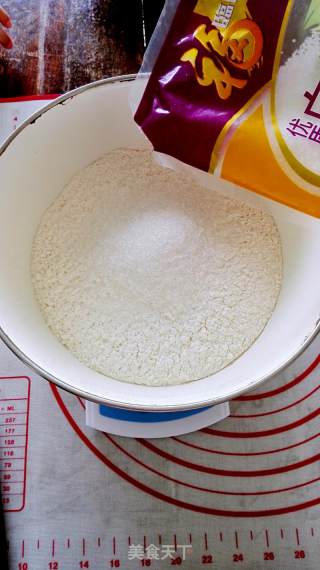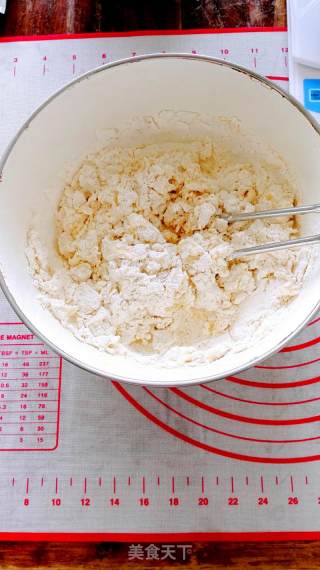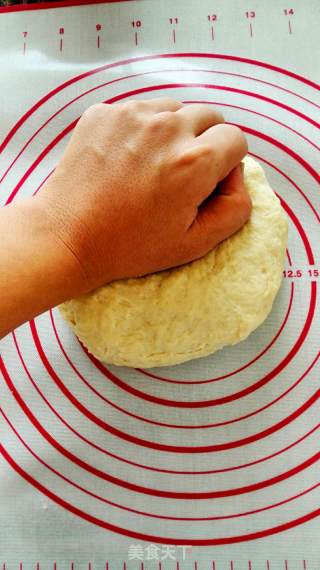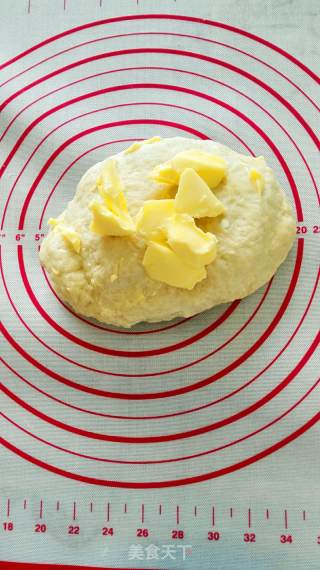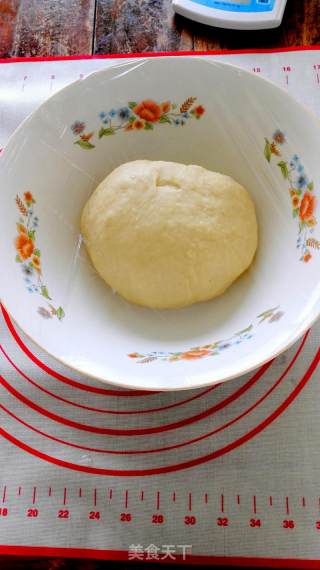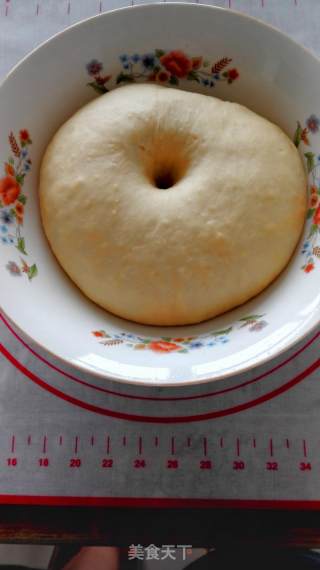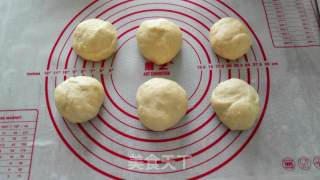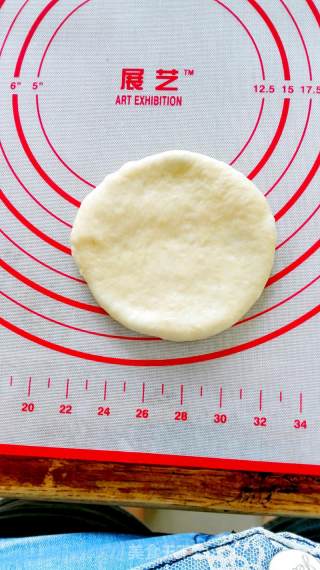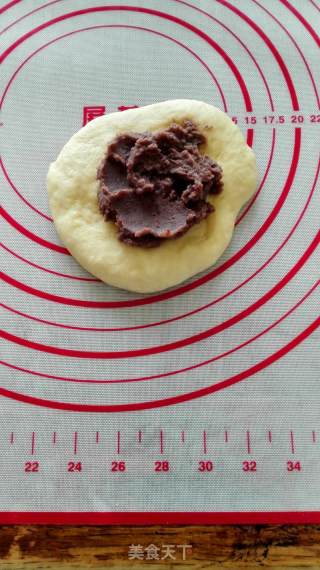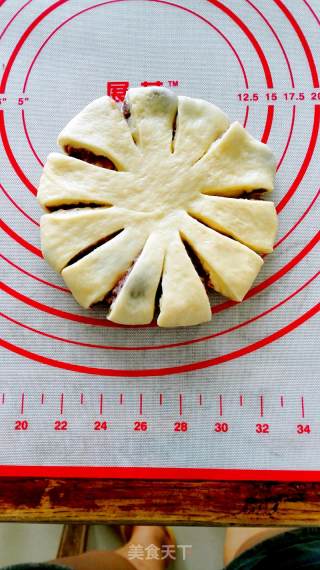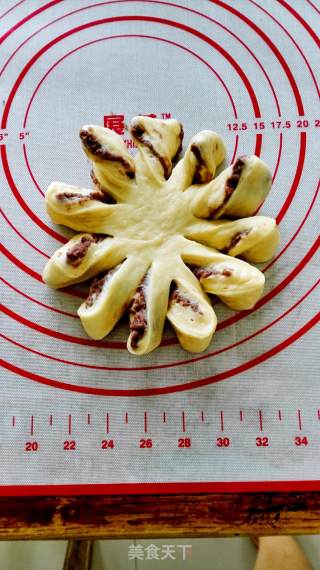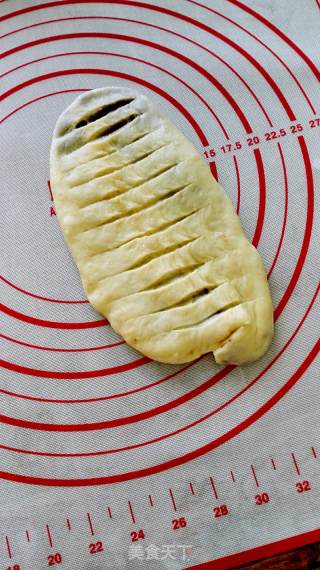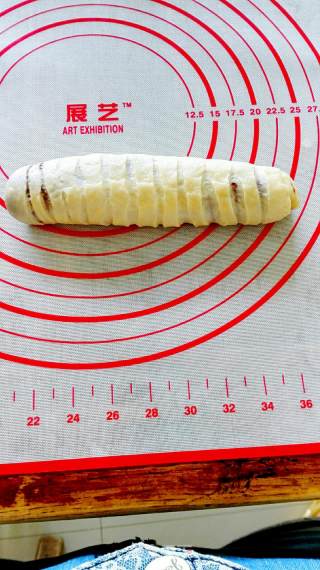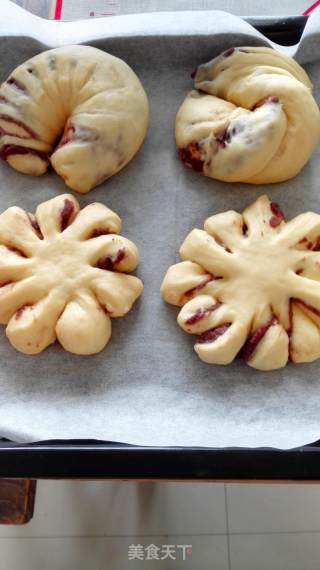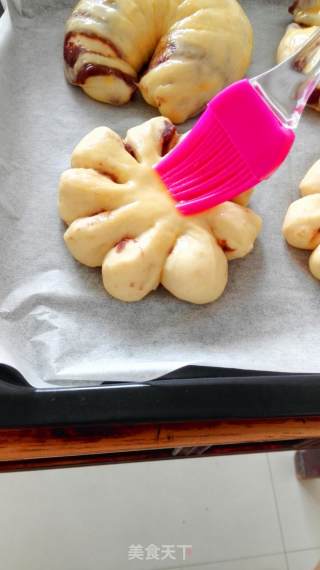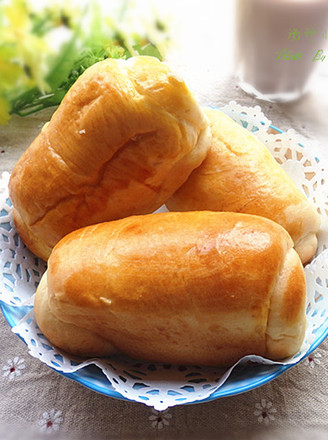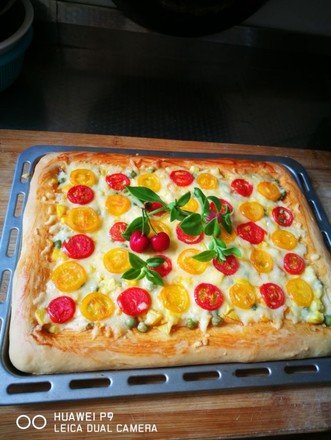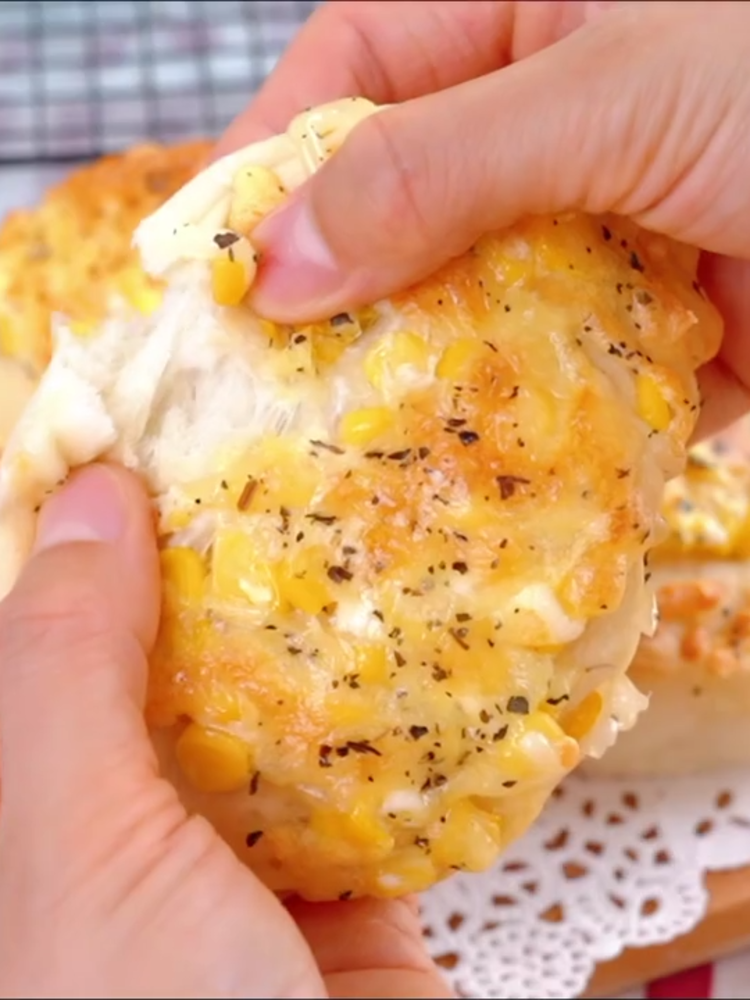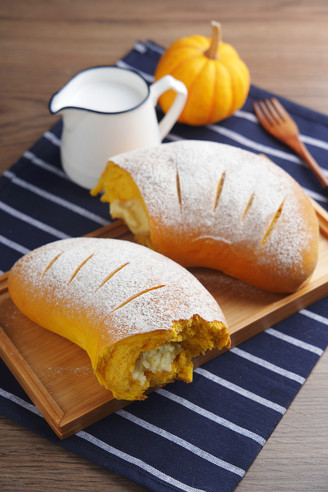Fancy Bean Paste Bread
1.
Dissolve the dry yeast in warm water with half the amount of the formula in advance, and let it sit for a while. (This formula uses 130G water, then use 65G water to dissolve the yeast)
2.
Weigh dry materials such as flour, sugar, salt, and milk powder.
3.
Add the water to dissolve the yeast, the other half of the water, beaten eggs and other ingredients other than butter.
4.
Mix the powder and liquid slowly until a dough is formed.
5.
Knead the dough vigorously. At this time, the dough will be very sticky and the surface will not be smooth. But stick to it and don't add flour lightly. Knead and knead, the dough will become elastic and the surface will become smooth. Moreover, with the formation of gluten, the dough began to become less sticky.
6.
After kneading to a certain degree, you can add butter. Add the softened butter to the dough and knead the butter into the dough vigorously. The dough was a bit "horrible" at first, but as the kneading progressed, the butter would gradually be absorbed by the dough. Keep kneading and the dough becomes smooth and elastic again.
7.
Test the strength of gluten: stretch the dough carefully to see if a film can be formed. At this time, the film is not particularly tough, and it is relatively easy to break. The cracked hole is an irregular shape, rather than a smooth circle. At this time the dough has reached the expansion stage. If you are making most sweet breads and prepared breads, you can stop kneading at this time.
8.
Put the kneaded dough into a large bowl, cover the surface with plastic wrap, and leave it at room temperature for the first fermentation.
9.
The dough is fermented to 2-2.5 times its original size. Dip your fingers in flour and poke a hole in the top of the dough. After pulling out your fingers, the hole will neither collapse nor shrink, but if it remains intact, it will be fermented. finished.
10.
The fermented dough is vented out of air, and divided into 6 slightly smaller doughs of equal weight, and rounded. Proof the shaped dough at room temperature for about 15 minutes (intermediate fermentation).
11.
Take a fermented dough and press it flat.
12.
Press the flat dough into a portion of red bean paste.
13.
Tuck the dough wrapped in red bean paste downwards and roll it into a flat circle with a rolling pin. As shown in the picture, use scissors to cut 12 knives on the flat round dough.
14.
Arrange the cut dough into a flower shape. (One)
15.
The second method is to take a fermented dough, flatten it, pack a portion of red bean paste, and pinch it tightly. Flatten the stuffed dough into an oval shape, and use a sharp knife to make a number of lanes on the surface (only the surface layer is scratched).
16.
Turn the dough over and roll it up, bend both ends into a circle, pinch the opening tightly.
17.
Put it into the baking tray and put it in an environment with a temperature of 38 degrees and a humidity of 80% for the final fermentation until the dough becomes twice as large as the original.
18.
Brush a layer of whole egg liquid on the surface of the fermentation.
19.
Put it into the preheated oven, in the middle of the oven, and turn it on at 180 degrees, 15 minutes, until the surface of the bread is golden.

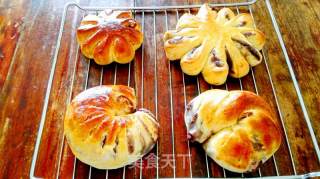
Tips:
1. Different flours have different water absorption, so it is not recommended to add the water in the formula at one time, but increase or decrease according to the actual situation of the dough.
2. The dough at the beginning will be very sticky. The plastic scraper is a very useful tool, which can help us shovel off the dough stuck on the chopping board. Personally recommend Zhanyi’s silicone kneading pads, which are particularly useful.
3. When making bread at home, without a professional fermentation tank, it is difficult to ensure the fermentation temperature and humidity of the bread. Therefore, we can only take the second place and try our best to create a similar environment. Here is a method: After arranging the dough on the baking tray, put it in the oven, put a tray of boiling water at the bottom of the oven, and close the oven door. After the bread is fermented, take it out of the oven, take away the boiling water in the oven, and then preheat the oven and roast it according to the conditions shown in the recipe.
4. When baking, pay attention to observation and do not paint too deeply to affect the appearance. If the surface of the bread is well colored, you can add a layer of tin foil on the surface of the bread.
5. Storage of bread: Bread can generally be stored at room temperature. If you want to keep it for a longer period of time, you can put it in the freezer compartment of the refrigerator. When you want to eat, take it out and bake it back to the oven to restore its softness. But don't put it in the refrigerator. The temperature of the refrigerator will accelerate the aging of the starch in the bread and greatly shorten the shelf life of the bread.

